Tags
bird's nest, Brown Hare, Brown Hawker dragonfly, comma butterfly, Common Fleabane, Common Hawthorn berries, cooking apples, Crabapples, Creeping Thistle, Fish-hook Cactus, garden, hogweed, Hornet, Hoverfly, leveret, mole hill, moonrise, pears, speckled wood butterfly, Suffolk, sunset, Sweet Pepper, Water Mint, Zinnia
This is another collection of things I’ve seen in my garden or near my home during the past month. The weather until a few days ago has been wonderful! Warm, sometimes very hot, mainly dry and sunny; it has been a lovely late summer.
This cactus nearly flowered for the first time two years ago but the warm, sunny weather didn’t last long enough and the buds shrivelled. Last year was too dull and cool so no buds formed at all. This year however, one of the three buds opened and stayed open for three days.
Richard is growing sweet peppers this year and this is a photo of them when they were just starting to turn red. Unfortunately, the camera focused on the leaf not the pepper.
Richard bought a tray of Zinnia flowers from the garden centre. They took their time to get established but eventually they got going and have been so bright and cheerful for the past month.
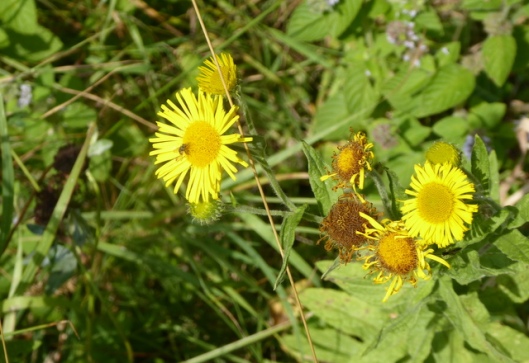
Common Fleabane (Pulicaria dysenteria) has been everywhere I’ve looked this summer but this poor shot is the only photo of it I’ve taken.
For centuries, the leaves of Fleabane were hung in bunches from ceilings or dried and burnt as a fumigant to repel fleas. Richard Mabey in his ‘Flora Britannica’ says the plant is a relative of the species which supplies the insecticide ‘pyrethrum’.
This is a woodland butterfly and its markings make it difficult to spot in dappled shade.
The Hawthorns are full of fruit; some people say this means we are to have a hard winter. I think it means we had good pollination in the spring.
I took this photo in a hurry as Brown Hawkers are such restless dragonflies and only perch for a few seconds. I love their amber wings!
We have had a Hornets’ nest under the tiles of the garage roof this summer. They are busy insects and carry on flying until well after sunset, unlike wasps who retire early. We have also got a wasps’ nest under the house roof tiles near our bedroom window. I could hear them chewing and munching away through the night when they were first constructing the nest in the early summer.
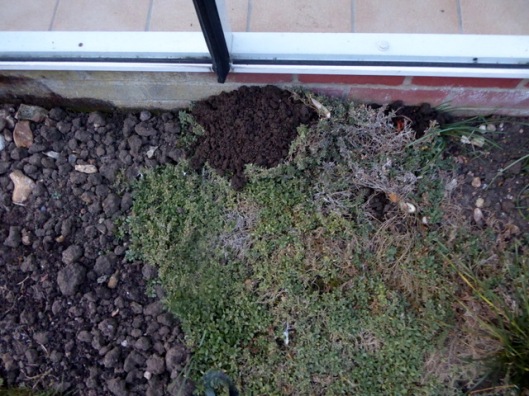
This is a mole hill that appeared in the rather dry border next to the conservatory. The hill got bigger the following day and many spring bulbs were uprooted.
We haven’t had much rain during the past month and the moles are searching for worms. The worms congregate where there is moisture i.e. in flower-beds (if they are watered) or next to paths or buildings where water runs off into the soil.
And shortly afterwards on the same evening…..
We were pleased to welcome a new visitor to our garden; a Leveret, a young Brown Hare (Lepus europaeus)
We first noticed it when it was very close to our kitchen window so you see part of the window frame in my photos! It then moved a little further away and was easier to photograph.
The best time of day to see hares is early morning or at dusk, as during the day they rest in grass, scrubland or in a ploughed furrow. They crouch low against the ground with their ears laid flat and are well camouflaged. If they are disturbed they are capable of running very fast – 35 mph/56kph – and run with their black-topped tail held downwards. They have large staring eyes, large black-tipped ears and powerful hind legs; they are shy and alert creatures. They typically live in open country, preferring not to live in direct contact with grazing animals and they are unlikely to be found in hayfields. They eat a wide selection of grasses and plants of open country as well as crops of cereal, clover, alfalfa, beets and potatoes. In winter a hare will dig for green plants under the snow and will eat buds and bark from bushes and trees, including fruit trees. They have suffered in areas of intensive farming and where herbicides are regularly used. Pesticides contaminate their food and may kill leverets.
In March and April hares can be seen leaping and chasing about which gives rise to the saying ‘mad, March Hares’. They often stand up on their hind legs and box each other; this may be two males vying for social dominance or, as is now thought more likely, a female (Jill) rebuffing a male (Jack). Leverets are born in the open with a full coat of fur and with their eyes open. They are born in litters of about three and the mother moves them immediately to another safe place which makes it more difficult for predators to find them. Each leveret is placed in a ‘form’ – a depression made in long grass – on its own where it lies low waiting for visits from its mother. This behaviour is very like that of deer.
While watering my green beans the other day I noticed some tiny white eggshells lying on the ground and wondered where they could have come from. Richard looked into the branches of the Laburnum tree above us and saw a tiny nest that I hadn’t been able to see – (I am quite a lot shorter than he is). It was a windy day and the pieces of shell must have been dislodged by the breeze. A week later I found the nest on the ground and here is my photograph of it.
As you can see from the photo it is only 11 cm long and about 6 cm wide. It is made of tiny twigs, grasses, leaves and moss all woven together and is lined with sheep’s wool and white feathers.
And finally, here is my music selection for this post.
Thanks for visiting!


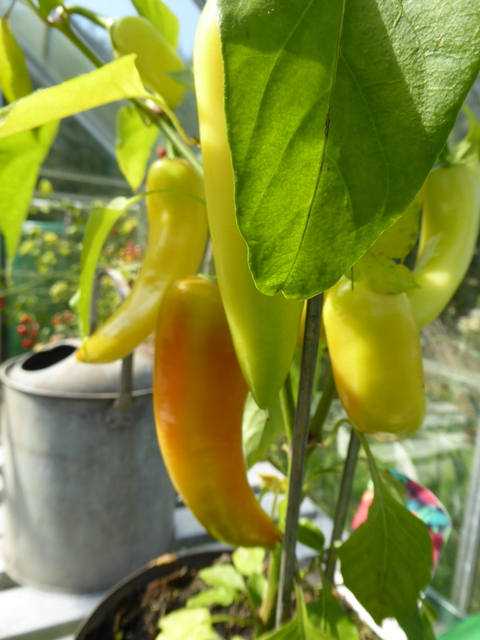
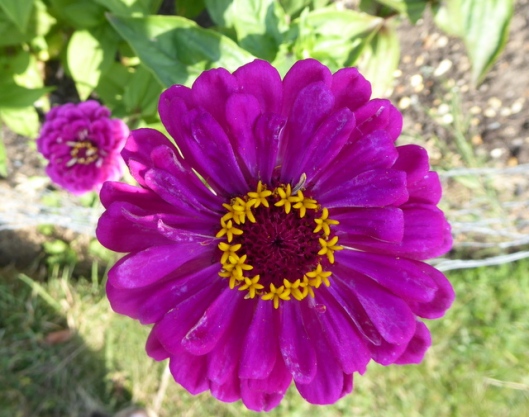
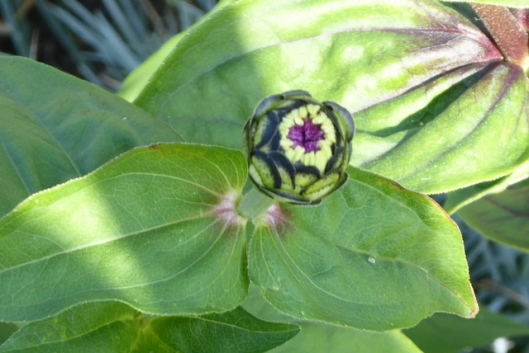

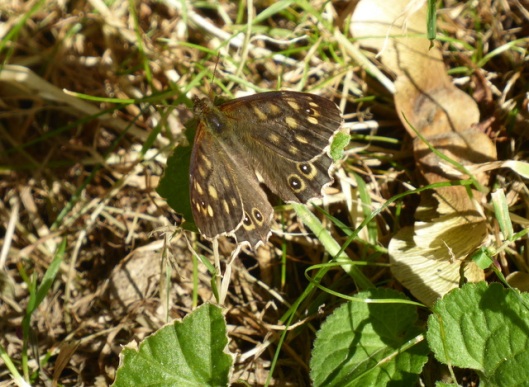



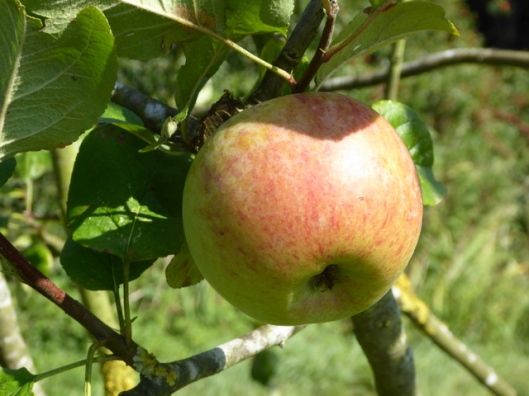

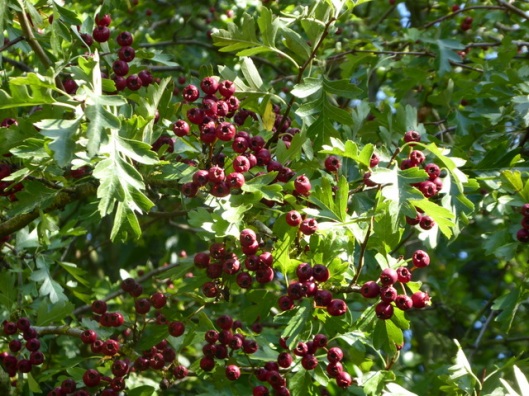
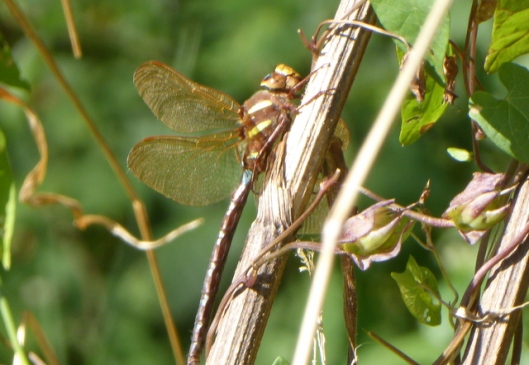
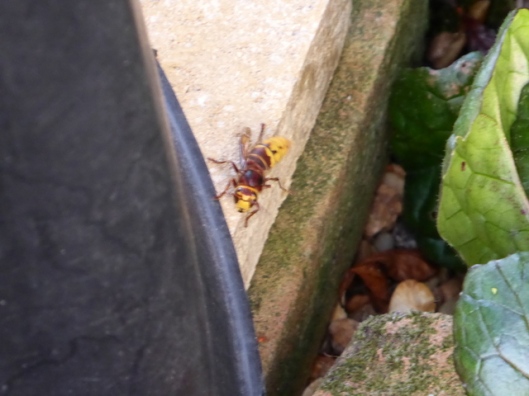

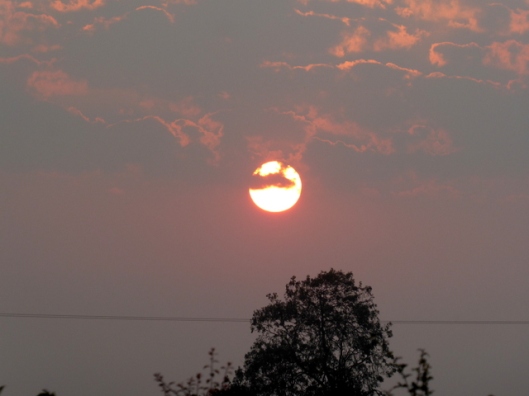
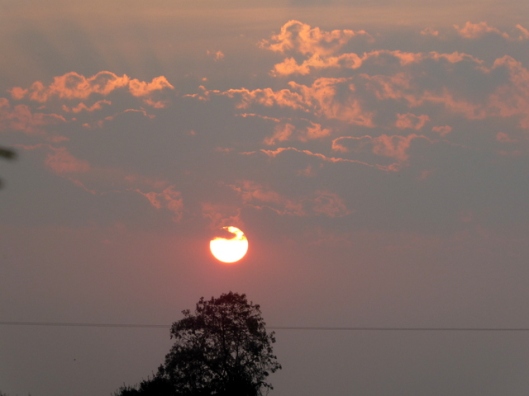


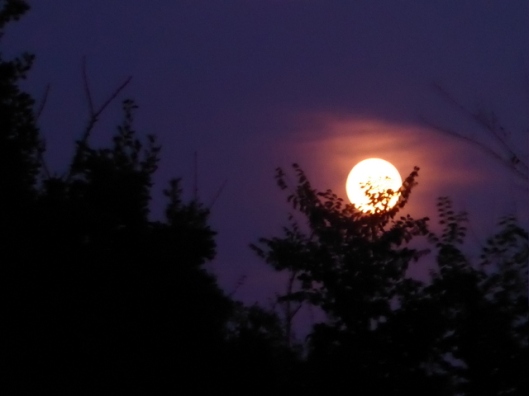
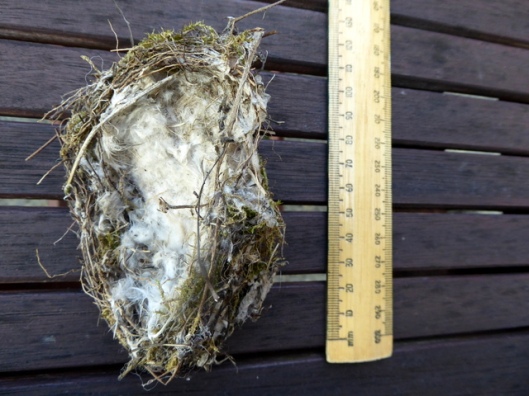
lovelies
LikeLiked by 1 person
There are few things better than an English garden – and this one’s a good one!
LikeLiked by 2 people
Thank-you very much Margaret.
LikeLike
Thank-you very much SAN jeet!
LikeLike
Good to see you and your gardens back, Clare! All is beautiful, and love the leveret. We don’t see many rabbits here, although a few some through now and then.
LikeLiked by 2 people
Thank-you so much Lavinia. We don’t see as many rabbits as we used to see here. The ones we do see soon succumb to myxomatosis which is horrible to see. Hares are much larger than rabbits and many country people think it bad luck to harm a hare. Hares in the old stories are supposed to be magical.
LikeLiked by 1 person
That cooking apple looked delicious I could almost have picked it off my screen.
LikeLiked by 1 person
Thank-you Susan. We will be picking and eating it soon I hope.
LikeLike
This really captures your September. Lovely range of photos and information. Hares are supposed to be common here among the bracken. I’ve never seen one but there were rabbits some years ago and I haven’t seen them for a long time. Ah the apples, my friend has the same problem over the valley, not a good year for apples for her. So much rain in May perhaps? But it’s been a peach year for her! Look forward to more from you soon.
LikeLiked by 1 person
Thank-you Georgina. The weather has been very strange this year with the temperature fluctuating so much and a lot of rain during the first six months. We haven’t had much rain recently and the level of the pond has gone right down and I am anxious for the fish in it (if the herons have left any after their visits!). I am not surprised that we haven’t much fruit!
LikeLiked by 1 person
I haven’t seen a hare in years. As a child I remember being quite scared of them…they were so much bigger and morepowerful than rabbits.
LikeLiked by 1 person
They are very big – much larger than rabbits and the adults have big bony faces and staring eyes. No wonder they scared you when you were small. I am always pleased to see them even though they might do damage in the garden. They are less troublesome than the deer and the rabbits!
LikeLiked by 1 person
Rabbits are an utter menace here and you can’t even eat them now as farmers have taken things into their own hands and introduce a horrendous way of controlling them
LikeLiked by 1 person
I have never eaten rabbit before. I am a little wary because of the myxomatosis virus which is still killing many of our rabbits.
LikeLiked by 1 person
Love this post Clare, especially the picture of the hare. Many Autumnal hugs and much love. ❤ xXx
LikeLiked by 1 person
Thank-you so much Jane! Hugs and love to you my dear Jane xxXXxx
LikeLiked by 1 person
I do learn a lot from your blog! Great information about moles and hares – thanks! How nice to have fall fruit in your garden.
LikeLiked by 2 people
Thank-you! We have a little fruit but not quite as much as we would have liked. The birds had all the blackberries (and also the greengages I suspect). The squirrels had all the hazelnuts but we have been spared a few apples!
LikeLiked by 1 person
What a wonderful post, Clare! All of your photographs are beautiful.The sunset photos are absolutely stunning! Thank you so much for brightening my day. xo
LikeLiked by 1 person
Thank-you Jill! I am so pleased you liked the photos xo
LikeLike
You have seen a lot of interesting things lately. I would have mixed feelings about seeing a hare in our garden but as we are in the middle of a town it is not very likely. I am sorry to say that your choice of music passed me by entirely. I must increase my listening education obviously.
LikeLiked by 1 person
We have become extremely philosophical about the animals that visit our garden. There is no way we can keep them out and as long as we try to protect what we can as best we can, we then put up with any damage and try to appreciate the animals as much as possible. Rabbits, deer and especially squirrels do much more damage than the hares.
LikeLiked by 1 person
You must indeed be very calm. I would be tearing my hair out.
LikeLiked by 1 person
I must admit that now and again we get quite despondent.
LikeLiked by 1 person
I was going to say that my favorite photo was the zinnia, because they were the first flowers that I ever planted with the help of my mom. Then I saw the stunning sunset and moon rise photos, and they became my favorites.
It must take a lot of patience to grow cacti that only bloom once every few years.
LikeLiked by 1 person
Thank-you Jerry. I think my husband has had the cactus for about 20 years and this year was the first time it flowered properly. He nearly discarded the plant three years ago as it was getting bigger and spinier and still hadn’t flowered!
LikeLiked by 1 person
The cacti flower is great news.
LikeLiked by 1 person
Thank-you! Yes it was such a nice surprise to see the flower at long last! My husband has had the cactus for about 20 years.
LikeLiked by 1 person
Stunning photos. I love the colors on the plants. Your description of the flora and fauna in your garden is uncanny.
LikeLiked by 1 person
You are very kind – thank-you!
LikeLiked by 1 person
No problem. Thanks for entertaining and educating me.
LikeLiked by 1 person
🙂
LikeLiked by 1 person
Your garden plants and visitors are interesting and lovely!
LikeLiked by 1 person
Thank-you!
LikeLike
A well done to Richard for coaxing the cactus into bloom. I used to have a cactus collection but they very rarely bloomed. Those peppers are nothing to sneeze at either!
If your loaded hawthorns and our ground nesting wasps building nests 5 feet off the ground are any indication, we might both have a rough winter.
I like your shots of the sunset, and the hare. I hope it doesn’t decide to visit the garden!
LikeLiked by 1 person
Thank-you Allen. That cactus is very old and Richard nearly discarded it a few years ago. I’m glad he didn’t! I’d rather we didn’t have a hard winter but a good frost and a covering of snow would be good, I think. We have too many bugs that need seeing off! It is impossible to keep any animals out of our garden so we try to protect individual plants, trees or beds from them. It doesn’t make for a very attractive garden with guards and fences and lots of chicken wire about but we save most of our plants that way!
LikeLiked by 1 person
I think wire fencing is a common sight in most suburban gardens. I certainly put up enough of it. I don’t think gardeners mind it but those who like to only view gardens might.
LikeLiked by 1 person
I am sure you’re right.
LikeLiked by 1 person
Wow–what a lot you’ve packed into this post! That cactus flower is amazing, especially given how long you had to wait, and it fun to see all the growing and flying and buzzing aspects of your garden. But I, too, love the hare the best–such a sweet face!
LikeLiked by 2 people
Thank-you Kerry! I thought the hare had a sweet face too. When they get to be adults they get quite gaunt and bony looking.
LikeLike
Such a lot of lovely things in your garden but the loveliest all for me were the leveret and the beautifully constructed bird’s nest. In Christchurch we also had a superb view of the harvest moon but I didn’t manage to take any photos of it. I am glad you did. 🙂 I also like your take on the haws; that they are the result of good pollination and not a harbinger of a hard winter!
LikeLike
It’s lovely that the warm weather is continuing into autumn, I packed as though i was going to Glasgow and it’s warmer in London so I’ve been quite hot 😄. Lovely photos.
LikeLiked by 1 person
My elder daughter visited us a couple of weeks ago from Sheffield and also packed the wrong clothes! Fortunately, she still keeps some clothes here and her sister has spare t-shirts to lend too!
LikeLike
I meant to say thank-you too!
LikeLike
Lovely photos Clare, you have such an array of wildlife in your garden 🙂
LikeLiked by 1 person
Thank-you so much Andrea! 🙂
LikeLiked by 1 person
I like visiting your garden, Claire!
LikeLiked by 1 person
You are very kind Christy, thank-you!
LikeLike
I love your sun photos! And you really got good ones of the hare. We tend to have more of the “bunny-rabbit” variety.
LikeLiked by 1 person
Thank-you Lisa! We get the bunny-rabbits now-and-again but I prefer the hares; they don’t dig holes 🙂
LikeLike
Great shots – some things I’ve never seen amongst them. Although I don’t normally associate them with laburnums could it be a goldcrest nest? Looks right and I’m sure the eggs are white.
LikeLiked by 1 person
Thank-you! It could well be a goldcrest nest.
LikeLiked by 1 person
Hope so, I like goldcrests. 😉
LikeLiked by 1 person
So do I. 🙂
LikeLike
I enjoyed reading about all your observations Clare. I don’t think you would have seen so much variety if you had not been looking very carefully indeed. It reminds me to slow down myself and take the time to notice. Thank you for sharing this with us. x
LikeLiked by 1 person
Thank-you very much Kim! x
LikeLike
It’s been lovely weather, it’s good that you can capture it whilst you can now that the ever so accurate weather forecast has predicted four months of snow. If we ever get a blogger convention, I vote to have it in your garden.
LikeLiked by 1 person
A blogger convention in my garden… there’s an idea!
Good Lord! Four months of snow?
LikeLiked by 2 people
Well we know how accurate these forecasts are, it was lovely last year, I ewas wandering home at four in a morning with my coat open and my short sleeved work shirt underneath, pleasant it was.
LikeLiked by 1 person
So many things happening in the garden before closing… We are also having lovely days here on the west coast of Norway, and the thought of rain and wind is far away. Maybe we’ll get to Christmas, and then think “it was just summer”! 🙂 Love your photos 🙂
LikeLiked by 1 person
Yes! 🙂 Thank-you 🙂
LikeLike
Lovely pictures, made me hungry too, I love apples and sweet peppers :). I’ve seen photos of hares before but those ears are amazing and so large! I’ve never seen one other than in photos though, you are so lucky to have beautiful nature to spend time in a photograph 🙂 ❤ .
LikeLiked by 1 person
Thank-you! This was only a young hare and about the size of a large rabbit. The adults are very big!
LikeLiked by 1 person
Another treat! Aren’t we all so lucky to be having such a glorious autumn! 🙂
LikeLiked by 1 person
Thank-you Liz. Yes it has been wonderful so far though today the wind has been chilly and I have needed my coat 😦
LikeLiked by 1 person
Same up here – I had to go out a couple of separate times today & tried different outer wear each time – hard to get the layering right!
LikeLiked by 1 person
What lovely photos ! you have a very nice blog.
LikeLiked by 1 person
Thank-you Jeyran!
LikeLiked by 1 person
Hi Clare,
I am catching up again, as usual! It was a delight to see another update of your garden. I love the cactus flower at the top. Cactus flowers are often quite beautiful aren’t they and often made more special by their rare appearance. I have a variety of night flowering cactus in my garden so I need to be up early to see their beautiful blooms before they close and shrivel once the sun rises.
Rabbits and hares are introduced species here and bred to plague numbers. The introduced disease myxomatosis helped to control their numbers but it was quite a cruel disease. It is a pleasure to see photos of these delightful creatures in their natural environment in your country. Beatrix Potter’s stories were a favourite with my children.
I appreciate the time and effort you go to in order to name the species of insects and plants you share, and also the extra information you give. I particularly enjoy knowing the uses of different plants. Thank you, dear Clare. 🙂
LikeLiked by 1 person
Thank-you Jane 🙂 Myxomatosis was introduced here too in the 1950’s and it is still killing rabbits. Recently a new strain of the RHD virus (RHD2) has been found here and is killing off so many rabbits that in many places they are becoming scarce! I haven’t seen a rabbit since the early summer, which I find very strange indeed. I am not sure how it affects hares. Hares do not cause as much damage and many people are superstitious about hurting them. They are also native and rabbits aren’t. I also appreciate the time you take to comment so nicely on my posts ❤
LikeLiked by 1 person
This was so lovely Clare! You have taken some beautiful photos! The ones of the sunsets and the moonrise were just breathtaking. I really get the impression of nature all around you and you give such lovely detail. I have to admit I was a bit alarmed by your description of the wasps chewing at night! You obviously have a perfect environment for all these creatures to want to move in with you!! How wonderful to have the young hare come so close to your house too – very special.
LikeLiked by 1 person
Thank-you! I can’t say I really like to think of the wasps so close to me when I’m lying in bed but I soon got used to their noise. They have all gone now.
xx
LikeLiked by 1 person
I find that I missed this post somehow…even though I’m so unbelievably late with my comment, I just wanted to pop in and say your photographs are so wonderful, as always! The cactus flower is breathtaking – so lovely of it to bloom longer for you this year. Loved the exquisite sunset/moonrise photos as well.
LikeLiked by 1 person
You’re very kind. Thank-you so much for taking the trouble to comment and for the compliment 🙂
LikeLiked by 1 person
Pingback: GOOD LUCK